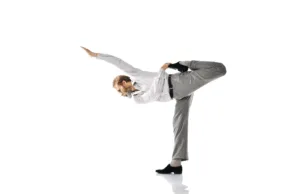Retirement can be a gradual process.
When to retire is one of the biggest decisions you’ll make in your life. There are so many factors to consider when deciding on this step, and since it’s a decision that will quite literally change your whole life, it only makes sense that it requires a good deal of thought. However, with the boomer generation redefining retirement, professionals now have more flexibility than ever for when they finally step away from work. While financial considerations are always important, you can now put more stock into how you want that transition to happen.
There are many professionals who like the idea of more time outside of work and giving attention to the other aspects of their life, but they aren’t quite ready to leave the workforce entirely. For these professionals, the idea of a phased retirement is very appealing. Phased retirement means moving to a more flexible work schedule which allows you to move into retirement more gradually. Sounds nice, doesn’t it? But there’s a lot to consider for even a decision like this.
Have a plan.
For some, a phased retirement probably seems like what you would do to avoid making a plan. It’s actually quite the opposite. Because you are neither fully retired nor fully in the workforce, you have a foot in each which means you have to have a plan for handling both aspects. Consider your work; what will this phased retirement look like? Do you have a timeline for when it will start? Do you know when you’ll fully retire? Will it be done in various stages? Not only is this something you’ll want to know, it certainly something your employer will want to know. Is this something they are willing or able to agree to? If not, what will you do for work? You can do freelance or take on part-time work, but that requires a good deal of planning as well. Then there is the second half to consider. Does your financial situation allow for a reduced income? What changes do you need to make? Are you ready for such a transition? These are only a small number of the very important questions you need to be asking yourself before making any decisions.
Know what you want.
While all the above considerations ask the question about whether you’re ready for this transition, it is important to consider what you want to get out of this as well. It might seem like a good next step to take, but put some real thought into why phased retirement is right for you. If you want to spend more time out of work, maybe you’ve lost interest in your work and it’s time to retire. If you are thinking you’re not ready to step away from work, maybe your career is still a big part of your life. Consider what a phased retirement would give you that you can’t get from the other two options. Do you want something specific to change in your career? Is this an opportunity to try something new? What do you want to pursue outside of work? Do you have time constraints to pursue it? There is no point in going down this path if it won’t ultimately improve your life overall. Sometimes it can be difficult to come to a realization of what you want, but giving some time to consider your feelings on the matter can mean so much in your final decision.
Let it be your choice.
Retirement has become a massive topic of interest in recent years. With boomers entering this phase of their career, their redefining of the concept and the many repercussions it will have on society, you’ll here plenty of opinions on what the proper retirement path looks like. But the purpose of a phased retirement is that it provides you with an alternative path that is ideal for you. Advice on how to build a comfortable and stable retirement can be very helpful, but don’t listen to others when they try to tell you what your retirement is. Those days are gone, and retirement is no longer certainty, it is a question and only you have the right answer.




